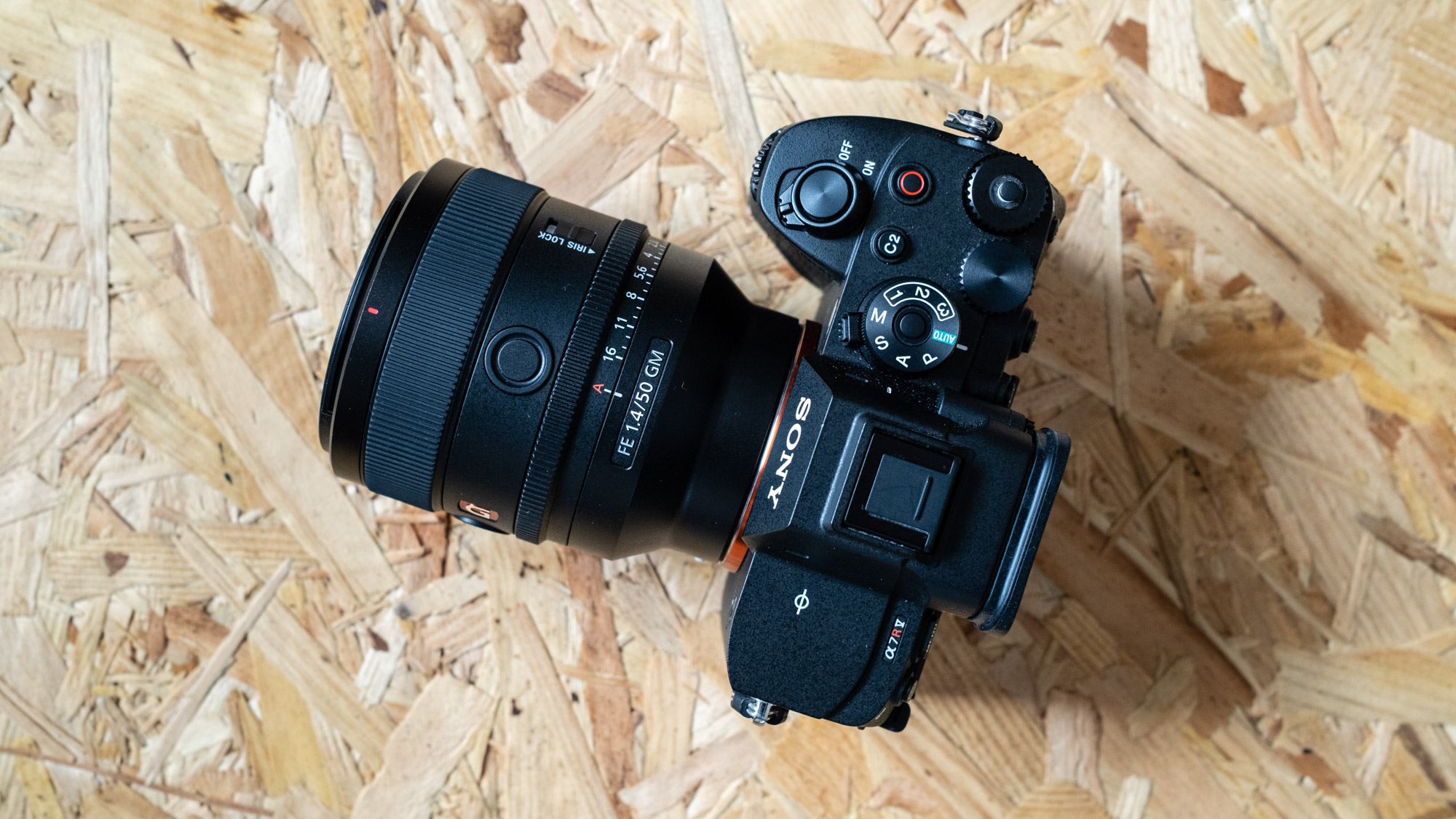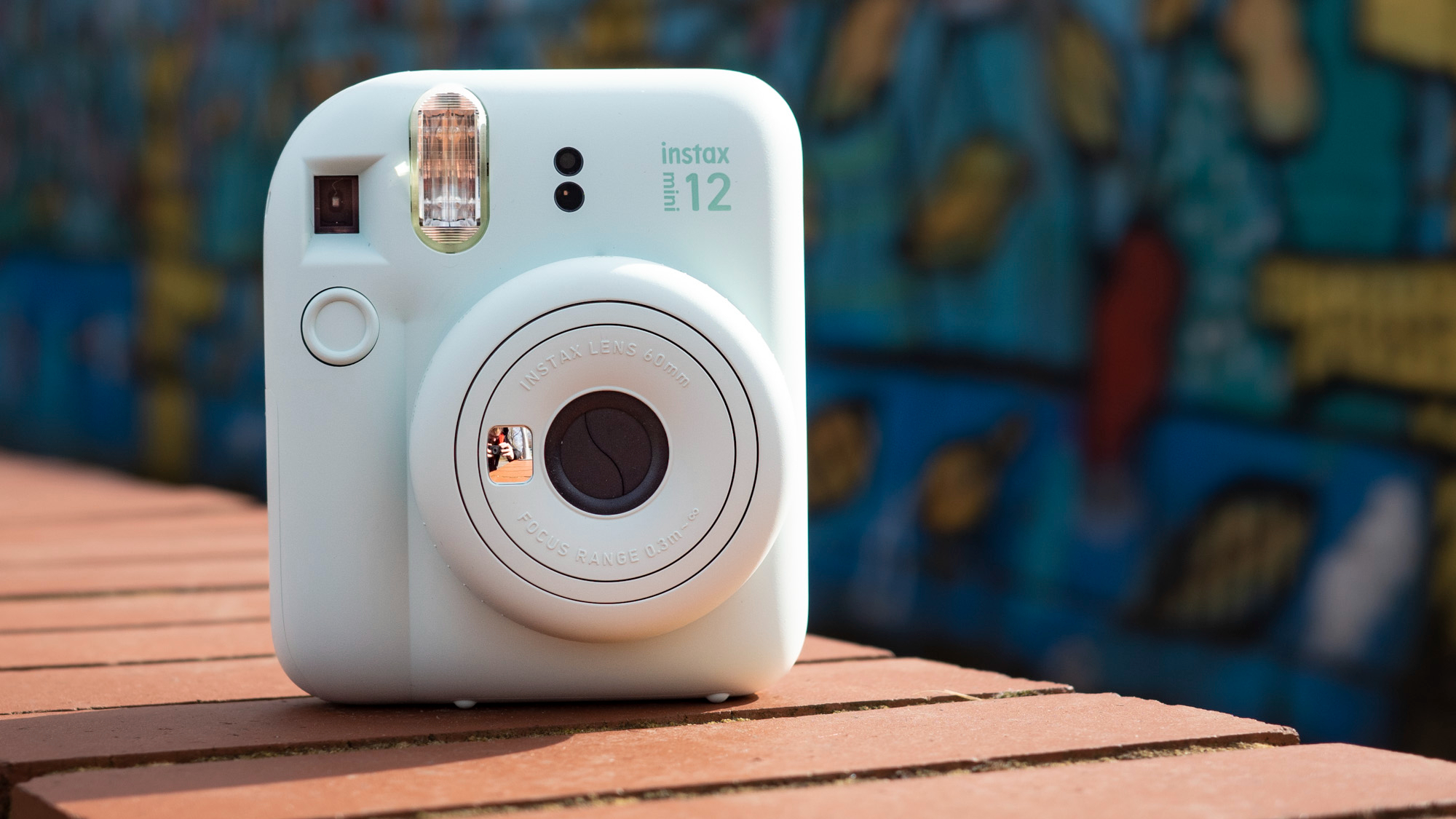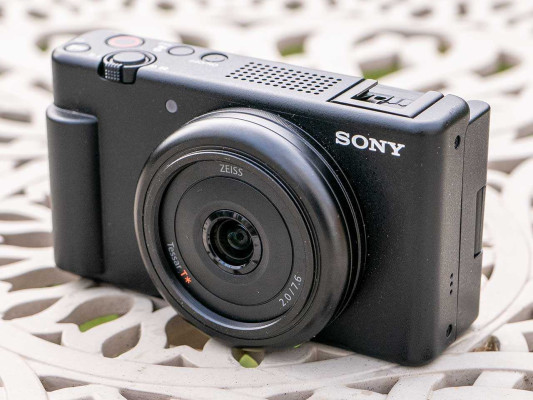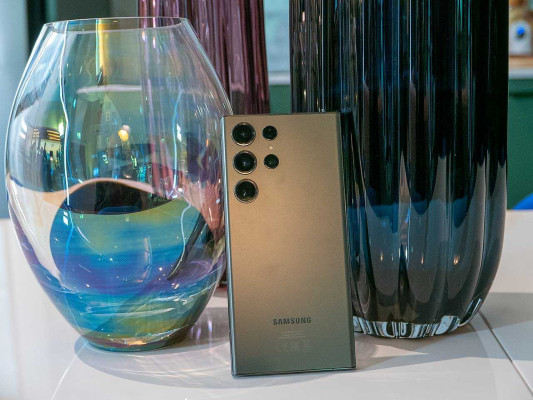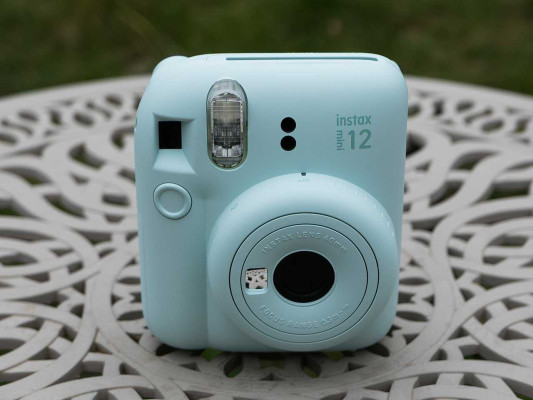Reviews

DxO PureRAW 3 review: Give Adobe's apps a much-needed boost with modern AI algorithms
DPReview Latest |
| DxO PureRAW 3 gives you the company's core noise and optical defect corrections in a clean, simple package designed to work alongside Adobe Photoshop or Lightroom. |
Two years ago, French software company DxO took a new tack with the noise and optical defect corrections for which it has long been famed. Previously, if you wanted to use these tools, you had to leave your existing imaging app and learn to use DxO PhotoLab instead. With the new DxO PureRAW, though, you can stick with your existing workflow and still take advantage of some undeniably impressive correction technology.
Last year, PureRAW received an update that improved its integration with Adobe's apps, boosted performance and added preliminary support for Fujifilm X-series cameras. Now, DxO PureRAW 3 arrives with an overhauled user interface that includes a versatile new queuing system. It also brings several new correction types and controls, including the top-of-the-line DeepPRIME XD denoising algorithms that debuted last year with PhotoLab 6.
Key features
- Designed for use with Adobe Photoshop, Lightroom and Lightroom Classic
- Simple, clean user interface that works hand-in-hand with the tools you already use
- Choose from HQ, PRIME, DeepPRIME or DeepPRIME XD denoising
- Correct lens defects like distortion, chromatic aberration, softness and vignetting
- Export images in Linear DNG, TIFF or JPEG formats
- Still a fairly steep price tag, albeit not increased since launch
Available immediately, DxO PureRAW 3 is priced at $129. A bundle with the Nik Collection 5 plugin pack is also available priced at $248, a discount of $30 over the individual pricing for both products. Upgrade pricing is provided for both products through DxO's customer portal, and a 30-day free trial is also available.
A cleaner, more efficient user interface
Upon first launching PureRAW 3, some changes are immediately obvious. The entire user interface has been restyled to be more in keeping with PhotoLab's current design, with fewer font styles and gray backgrounds that are easier on the eyes than the glaring white background PureRAW 2 used for the Process Options dialog.


The result is both cleaner and more modern-looking than before. The screen space is also significantly more efficient, so while the image thumbnail size in the lightbox is unchanged, it shows quite a few more thumbnails on screen at once. You can still sort lightbox images by capture date or name, but there's now a new option to sort them by ISO sensitivity, which makes sense in a program where noise reduction is a key feature.
You can also now reverse the sort order regardless of the criterion you choose, where previously you could only do so when sorting alphabetically. The filter also lets you show not only processed or unprocessed images, but also those which have been queued but not yet processed.
 |
| It's not immediately obvious, but you can switch PureRAW 3 into a single image view with film strip by double-clicking on a thumbnail. |
Really, I only found two UI annoyances. One is that you can't preview the effects of filtering prior to final processing of your images, although you can at least compare images after processing in split or toggled views. Also, unlike its predecessor, PureRAW 3 no longer remembers the last folder used when you save images to a custom location, and instead reverts to its Program Files folder each time you revisit the Process Options dialog.
Overall, though, the new version is a program that is much easier on the eye and better lets you focus on your images.
A versatile queuing system that lets you keep on working
An even bigger change is to be found in PureRAW 3's new queueing system. In the previous version of the program, once you clicked the 'Process' button the program's UI was inaccessible until your entire batch of selected images had finished processing. Now, you can return to the lightbox view and continue to browse or add images while the program works on processing the queue in the background.
 |
| DxO PureRAW 3 can now work asynchronously, processing images in the background while you continue to browse images and make changes to the processing queue. |
You can also pause and resume queue processing at will, and you can even make changes to its order while processing is underway, should you wish. These are huge improvements over PureRAW 2's more linear nature.
One slight quirk is that images are added to the queue in numbered batches, and you can't drag images between batches as each batch has its own unique processing settings. This means that, as in the screenshot above, you can end up in a situation where each batch number appears multiple times.
DeepPRIME XD AI denoising makes its PureRAW debut
On the image processing front, the biggest change in PureRAW 3 is the addition of a fourth noise reduction algorithm, DeepPRIME XD. This AI-based tool first appeared in DxO PhotoLab 6, which we reviewed late last year. Since we've already tested it in significant depth for that review and the underlying algorithms are basically the same for both apps, we won't go into too much detail here; see the earlier review for the specifics.
 |
||||
| Out-of-camera JPEG | PureRAW 3 HQ | PureRAW 3 PRIME | PureRAW 3 DeepPRIME | PureRAW 3 DeepPRIMEXD |
Briefly, though, DeepPRIME XD delivers even crisper details and less noise than the earlier HQ, PRIME and DeepPRIME algorithms, all of which remain available in PureRAW 3 as well. The tradeoffs that go into achieving this are twofold. Firstly, like both of the earlier PRIME techniques, DeepPRIME XD works by throwing a lot more processor power at the task of denoising your images, meaning that each image takes a good bit longer to process than with most programs.
To give you a sense of this, on my 2018-vintage Dell XPS 15 9570 laptop with an NVIDIA GTX 1050 Ti Max-Q graphics processor, running Windows 10 version 21H2, to denoise about 100 Raw images totaling about 2.5GB with DeepPRIME XD took around 110 minutes. By way of comparison, it took around 11 minutes with the HQ denoising algorithm. That's a huge difference, but the good news is that the difference versus the existing DeepPRIME filter was a more modest 26 minutes, or only some 31% longer.
 |
||||
| Out-of-camera JPEG | PureRAW 3 HQ | PureRAW 3 PRIME | PureRAW 3 DeepPRIME | PureRAW 3 DeepPRIME-XD |
It's also important to note that the DeepPRIME XD algorithms, while great in many shots where the detail is predominantly natural – e.g., hair, fur, foliage and the like – can be prone to creating false detail and artifacts on people and man-made substances. This can be particularly noticeable in high-sensitivity shots of skin or repeating textures like brick walls.
But that's why you still have access to the earlier algorithms as well, to give you the option to fall back on a more stable denoising algorithm at the expense of leaving some added noise in your images when your subject isn't amenable to a newer, AI-based algorithm.
 |
||||
| Out-of-camera JPEG | DeepPRIME XD, all corrections | |||
One last point to note about the denoising algorithms is that the standard PRIME algorithm isn't available for Fujifilm RAW files from X-series cameras, just as was the case in PureRAW 2. FujiFilm X-shooters do have access to HQ, DeepPRIME and DeepPRIME XD for their Raws. If your image batch includes any Fuji X-Trans Raws and you select the PRIME algorithm, you'll be warned that the program will fall back to HQ denoising for those shots.
Distortion correction now gives you the full picture
PureRAW 3 gives you more control over distortion correction than did its predecessor, which can be particularly handy when you want to make adjustments to your composition post-capture.
 |
||||
| Uncorrected | Original ratio | Max. rectangle | Max. area | |
As well as allowing you to enable or disable distortion correction, the app now allows you to select how to crop the corrected image: to match the original proportions, crop to the largest rectangle it can from the corrected image, or include every pixel of the corrected image.
In this last case, PureRAW 3 will fill in missing areas with black pixels, which you can then crop out yourself or repopulate using a content-aware fill tool from your Adobe or third-party application of choice.
 |
||||
| Uncorrected | Original ratio | Max. rectangle | Max. area | |
Note that while DxO's lens corrections are based on in-house lens testing, that doesn't necessarily mean they're always infallible. As you can see in the example above from a Panasonic ZS70, even the original ratio version could still use a tiny bit more cropping at frame left and right. This is likely due to sample variation in the camera from that which was tested by DxO, but it's worth being aware of.
There's more control over softness correction, too
You also get more control over sharpening of your images to correct for lens softness than was previously the case. Where PureRAW 2 offered only an on/off toggle, the new version allows you to select from a choice of Soft, Standard, Strong or Hard corrections.
 |
||||
| Soft | Standard | Strong | Hard | |
We hit a bug in our pre-release version of the software here, which we mention for completeness; we imagine it will be fixed in short order if it hasn't been already. We discovered that the selected softness correction was ignored when the HQ algorithm was selected, yielding pixel-identical results in every case. Softness correction worked fine when PRIME-variant algorithms were chosen.
Taming vignetting and aberrations is not new, but now optional
Two last changes to the lens correction toolset are toggles for vignetting and chromatic aberration corrections. Interestingly, though, while PureRAW 2 lacked both, neither tool is actually new in PureRAW 3.
 |
||||
| Uncorrected | Vignetting correction | |||
From testing both apps side by side, we can confirm that the earlier app included both corrections already, it's just that they couldn't be disabled. Instead, they were active at all times, even when lens corrections weren't selected for a given image.
 |
||||
| Uncorrected | Chromatic Aberration correction | |||
You can now disable either correction if you would prefer to keep the vignetting or aberrations for artistic reasons, or if the corrections aren't working correctly on a particular image.
TIFF export expands your possibilities with third-party apps
DxO has added a new export format to PureRAW 3. As well as the existing Linear DNG and JPEG, the application can now export TIFFs. This could be handy if you're using the program with a non-Adobe application that can't support Linear DNGs, as it means you're not stuck with the lossy JPEG format as your intermediary stage in the editing process.
 |
||||
| Out-of-camera JPEG | DeepPRIME XD, all corrections | |||
Monthly updates mean camera and lens support will keep growing
One last improvement, which we think might make PureRAW 3 a worthwhile upgrade for users of earlier versions, is in its lens and camera support. We understand from our briefing with the company prior to launch that it intends to release new optics modules on a monthly basis going forward, so you can expect to see continuing support for new camera body/lens pairings.
Of course, there's no guarantee that any particular pair will be supported, as DxO's modules are reliant on in-house testing, but so long as you're not opting for particularly obscure cameras and lenses there's a fair chance that your new purchases will be added to the roster soon. As for PureRAW 2 owners, we understand that the program will receive one final batch of modules that will bring its camera/lens support up to parity with that which PureRAW 3 featured at launch.
 |
||||
| Out-of-camera JPEG | DeepPRIME XD, all corrections | |||
Want to know if your particular cameras or lenses are compatible? You can find out on DxO's site courtesy of its Supported Cameras and Lenses list.
Conclusion
With its latest release, DxO PureRAW 3 continues to move in a positive direction. For our money, the standout features are its new DeepPRIME XD noise reduction algorithm and the queuing features, while the refreshed user interface also makes it noticeably more pleasant to use.
But while we're on the topic of money, that remains one of our primary concerns with PureRAW: With just a handful of tools and very limited potential for manually tweaking its results, a pricetag that's more than half that of the far more capable DxO PhotoLab still feels like quite a big ask.
 |
||||
| Out-of-camera JPEG | DeepPRIME XD, all corrections | |||
That said, if you're already well-acquainted with Adobe's applications – and especially if you don't want to forego working in Lightroom – we could definitely see paying for the privilege of accessing DxO's superior noise reduction technology in-app. There's something to be said for solutions that remove the learning curve and let you stick with what you know.
For users with earlier versions, the question of whether to upgrade is a tougher one, in part because DxO doesn't publicly state its upgrade pricing. While DeepPRIME XD and the queueing features are worthwhile, they might not be enough to spur an upgrade by themselves. More likely, the choice to upgrade will be prompted by the need for camera/lens support that PureRAW 2 won't provide.
Overall, though, if you can justify its cost and have a use for DxO's testing-based lens corrections and top-notch noise reduction, we think PureRAW 3 is an excellent option.
| What we like | What we don't |
|---|---|
|
|
 |
||||
| Out-of-camera JPEG | DeepPRIME XD, all corrections | |||





